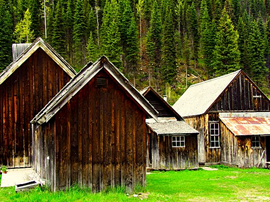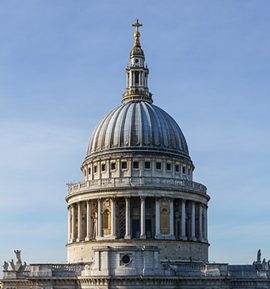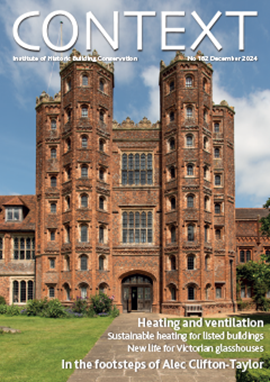England's Railway Heritage from the Air

|
| England’s Railway Heritage from the Air, Peter Waller, Historic England, 2018, 302 pages each illustrated in black and white (some colour). |
The Aerofilms archives, now part of the collections of Historic England, were written up in 2014 in a thematic publication to mark their acquisition on behalf of the nation. Results soon followed with richly illustrated books in landscape formats to cover the motoring heritage and the maritime heritage, as seen in shots taken from low-flying planes, a technology that had been developed for military purposes in the first world war.
Another volume now confronts the great quantity of material in which the railways of England and their buildings were the main features picked out by the cameras. The earliest is a picture of Sevenoaks Station in Kent dated 1920, at the very beginning of the Aerofilms enterprise. The 20th century is then recorded up to 1992, the final choice of photographs showing Bridgnorth and Haworth. The coverage is wide, both in geography and topic.
If the 1920s to the ’90s are the outer dates, the essence of the book and its greatest value come from the middle years either side of the second world war. The impact of industrialisation on towns and cities is seen graphically before the war with workshops and goods yards crowding around the stations, every inch of space being used for manufacturing and little scope given for the setting of the workers’ houses. Another shot of Bishopsgate (City of London), dated 1947, highlights the impact of bombing and the scars left on the dense urban scene. Post-war reconstruction follows: a vast panorama of Plymouth from 1962 shows how modern concrete blocks began their march across a transformed landscape now patterned with motor routes.
Students of railways will be delighted to find termini, smaller stations and the broad swathes of tracks which formerly surrounded them abundantly featured. Other forms of infrastructure, such as viaducts, are seen from the unique viewpoint of an aircraft. The range from great city centres, where much fabric since lost to us is recorded, to small towns and stretches of coastline, provides a picture of England from the air to include its suburbs and beyond.
A view of York and its city walls in 1921 shows open fields and hedgerows at a distance of only a few yards from the four curving platform roofs and the great hotel built next to the station from 1878 to 1896. In a view of Berkhamsted, the London and Birmingham Railway of 1833 sweeps through a narrow gap between the banks of the canal and the Norman motte-and-bailey castle only yards away.
Perhaps even more than the motoring and maritime books that preceded it, the railway volume has a full text by this highly experienced author at each right-hand page opposite the beautifully printed images. It adds up to an account of the country’s topography, providing ample evidence of how the Victorians reshaped England both in town and country.
This article originally appeared as ‘Aerofilms archives’ in IHBC's Context 159 (Page 60), published in May 2019. It was written by Graham Tite, conservation officer.
--Institute of Historic Building Conservation
Related articles on Designing Buildings
- Beeching cuts.
- Conservation.
- Conservation area.
- England's seaside heritage from the air.
- Heritage.
- Historic England.
- IHBC articles.
- Masaryk Railway Station regeneration.
- Off the rails: railway carriages reused as holiday homes and permanent housing.
- Railway engineering.
- Railway stations.
- The Institute of Historic Building Conservation.
- The longest railway tunnels in the world.
- Why demolition and infilling are blunt weapons in the management of historic structures.
IHBC NewsBlog
SAVE celebrates 50 years of campaigning 1975-2025
SAVE Britain’s Heritage has announced events across the country to celebrate bringing new life to remarkable buildings.
IHBC Annual School 2025 - Shrewsbury 12-14 June
Themed Heritage in Context – Value: Plan: Change, join in-person or online.
200th Anniversary Celebration of the Modern Railway Planned
The Stockton & Darlington Railway opened on September 27, 1825.
Competence Framework Launched for Sustainability in the Built Environment
The Construction Industry Council (CIC) and the Edge have jointly published the framework.
Historic England Launches Wellbeing Strategy for Heritage
Whether through visiting, volunteering, learning or creative practice, engaging with heritage can strengthen confidence, resilience, hope and social connections.
National Trust for Canada’s Review of 2024
Great Saves & Worst Losses Highlighted
IHBC's SelfStarter Website Undergoes Refresh
New updates and resources for emerging conservation professionals.
‘Behind the Scenes’ podcast on St. Pauls Cathedral Published
Experience the inside track on one of the world’s best known places of worship and visitor attractions.
National Audit Office (NAO) says Government building maintenance backlog is at least £49 billion
The public spending watchdog will need to consider the best way to manage its assets to bring property condition to a satisfactory level.
IHBC Publishes C182 focused on Heating and Ventilation
The latest issue of Context explores sustainable heating for listed buildings and more.
















